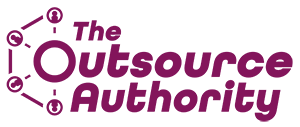In today’s fast-paced business world, finding the right talent can feel like searching for gold. 🌟 Whether you’re an early-stage startup or a small business owner, securing top freelance talent can be a game-changer for your company. The freelance market is booming, offering a wealth of skilled professionals ready to help you scale your business without the overhead costs associated with full-time employees.
In this blog, we’ll walk you through the process of spotting and securing the best freelancers to meet your needs. From identifying your requirements and researching the market to evaluating candidates and building strong working relationships, we’ll cover everything you need to know to leverage freelance talent effectively.
Finding top freelance talent is not just about filling a gap; it’s about enhancing your team’s capabilities, driving growth, and ensuring your business can thrive in a competitive landscape. Ready to uncover the secrets to finding gold in the freelance market? Let’s dig in! 🚀
Finding the perfect freelancer starts with a crystal-clear understanding of your needs. Without a clear vision, you might find yourself sifting through endless profiles that don’t quite hit the mark. Here’s how to set yourself up for success:
Assessing the Specific Skills and Expertise Needed 🔍
Think about your project and break down the exact skills and expertise required. Ask yourself:
- What are the core competencies you’re looking for?
- Are there any specialized skills or certifications that are a must-have?
- What level of experience will ensure your project’s success?
Imagine you’re developing a new website. You might need a web developer who knows their way around HTML, CSS, and JavaScript, but who also has a knack for design and a good grasp of SEO. Getting specific about these requirements right from the start helps you zero in on the right talent.
Defining the Scope and Requirements of the Project 📝
Next, lay out the full scope of your project. This is your chance to set expectations and paint a clear picture of what you need. Consider including:
- Objectives: What are the main goals of the project? Be precise about what success looks like.
- Deliverables: What will the freelancer be handing over to you? Detail the expected quality and format of these deliverables.
- Timeline: What’s your deadline? Outline the start and end dates, and include any key milestones.
- Budget: What’s your budget? Be upfront about what you’re willing to spend and factor in any additional costs that might pop up.
Defining these elements in detail not only helps you but also gives potential freelancers a solid understanding of what you expect, making it easier for them to decide if they’re a good fit for your project.
To find top freelance talent, thorough research is essential. Knowing where to look and how to evaluate freelancers can save you time and help you find the best match for your needs. Here’s how to dive into the freelance market effectively:
Where to Look for Top Freelancers 🔍
Several platforms are popular for finding freelancers, each with its unique strengths:
- Upwork: One of the largest freelance marketplaces, Upwork offers a wide range of freelancers with various skill levels. You can post job listings, receive proposals from freelancers, and even invite specific freelancers to apply. Upwork supports both hourly and project-based work, making it ideal for ongoing and long-term projects. Additionally, Upwork now allows clients to take freelancers off the site and pay them directly, which adds flexibility for long-term collaborations.
- Fiverr: Known for its gig-based model, Fiverr is excellent for specific projects with defined end dates. Unlike Upwork, you don’t post jobs for freelancers to apply; instead, you browse through freelancer profiles and reach out to those who match your needs. Fiverr’s platform encourages direct communication with freelancers to start conversations and negotiate project terms.
- LinkedIn: A professional networking platform, LinkedIn is excellent for finding freelancers with specific expertise. You can search for freelancers, check their endorsements and recommendations, and connect directly.
- Specialized Niche Platforms: Depending on your needs, you might also explore niche platforms like Toptal for developers with deep technical experience (top 3% according to the platform), 99designs for designers, or ClearVoice and ProBlogger for content creators.
Understanding Freelancer Profiles and Reviews 📝
When evaluating freelancers, their profiles and reviews provide valuable insights:
- Profiles: Look for detailed profiles that include a freelancer’s skills, experience, and portfolio. A comprehensive profile often indicates a professional who takes their freelancing career seriously.
- Reviews and Ratings: Client reviews and ratings can reveal a lot about a freelancer’s reliability and quality of work. Pay attention to consistent feedback patterns—both positive and negative.
- Portfolio: A strong portfolio showcases a freelancer’s past work and gives you a sense of their style and capabilities. Make sure their portfolio aligns with the quality and type of work you need.
- Communication: Effective communication is crucial. Notice how responsive and clear the freelancer is during your initial interactions. Good communication is often a sign of a professional who will be easy to work with.
Once you’ve identified potential freelancers, the next crucial step is evaluating and selecting the best candidate for your project. This process involves conducting interviews, assessing skills, and checking previous work to ensure you find the most suitable freelancer. Here’s how to do it effectively:
Conducting Interviews and Assessments 🎤
Interviews are a vital part of the selection process. They allow you to gauge the freelancer’s communication skills, professionalism, and understanding of your project. Here are some tips for conducting effective interviews:
- Prepare Questions: Draft a list of questions that cover both technical skills and soft skills. Ask about their experience with similar projects, their approach to problem-solving, and how they handle tight deadlines.
- Discuss Expectations: Clearly communicate your project’s expectations, deadlines, and deliverables. Make sure the freelancer understands the scope and requirements.
- Evaluate Communication Skills: Good communication is essential for successful collaboration. Pay attention to how clearly and promptly the freelancer responds to your questions.
- Assess Cultural Fit: If the freelancer will be working closely with your team, consider their fit with your company culture. This can be as important as their technical skills.
Checking Portfolios and Previous Work 📂
A freelancer’s portfolio is a window into their capabilities and style. Reviewing their past work can help you determine if they have the right skills and experience for your project. Here’s what to look for:
- Relevance: Look for projects similar to yours. This indicates that the freelancer has the specific skills and experience needed for your task.
- Quality: Assess the quality of their work. Pay attention to details, creativity, and the overall execution of their projects.
- Client Feedback: Check for reviews or testimonials from previous clients. Positive feedback can be a good indicator of reliability and professionalism.
- Consistency: Consistent quality across different projects suggests a reliable and skilled freelancer.
Once you’ve selected your freelancers, the next step is to build strong relationships with them. Good relationships lead to better communication, higher quality work, and more successful projects. Here’s how to create and maintain these essential connections:
Communicating Expectations and Goals Clearly 🗣️
Clear communication is the foundation of any successful freelancer relationship. Here’s how to ensure your expectations and goals are understood:
- Set Clear Objectives: From the outset, make sure your freelancer knows what you expect. Outline the project’s goals, deliverables, deadlines, and any specific requirements.
- Provide Detailed Briefs: A comprehensive project brief can eliminate misunderstandings. Include all necessary information about the project’s scope, target audience, and desired outcomes.
- Regular Updates: Schedule regular check-ins to discuss progress and any potential issues. This keeps everyone on the same page and allows for adjustments as needed.
- Use Communication Tools: Leverage tools like Slack, Trello, or Asana to streamline communication and project management. These platforms help keep all discussions and documents in one place, making it easier to track progress.
Providing Constructive Feedback and Support 👍
Feedback is crucial for growth and improvement. Here’s how to provide it effectively:
- Be Specific: When giving feedback, be specific about what works and what doesn’t. Instead of saying, “I don’t like this,” explain why and how it can be improved.
- Be Timely: Provide feedback as soon as possible after receiving work. This allows freelancers to make adjustments while the project is still fresh in their minds.
- Balance Criticism with Praise: Highlight what the freelancer did well, in addition to areas for improvement. This balanced approach fosters a positive working relationship.
- Offer Support: Make sure your freelancers have the resources they need to succeed. Whether it’s additional information, tools, or access to other team members, providing support helps them deliver their best work.
Managing freelancers effectively is the key to ensuring your projects run smoothly and efficiently. By employing the right project management techniques and tools, you can keep everything on track and maintain clear communication. Here’s how to manage freelancers like a pro:
Effective Project Management Techniques 🗂️
- Set Clear Milestones and Deadlines: Break your project into smaller tasks with specific milestones and deadlines. This helps freelancers understand what’s expected at each stage and keeps the project moving forward.
- Regular Check-Ins: Schedule regular check-ins to discuss progress, address any issues, and provide feedback. This keeps everyone aligned and allows for adjustments if needed.
- Use Detailed Briefs: Provide freelancers with detailed briefs that outline the project scope, objectives, and deliverables. The more information they have, the better they can perform.
Tools and Platforms for Managing Freelancers 💻
- Trello: A visual project management tool that helps you organize tasks, assign responsibilities, and track progress through boards and cards.
- Asana: A comprehensive platform for managing projects and teams, allowing you to set tasks, deadlines, and collaborate efficiently.
- Slack: A communication tool that facilitates real-time conversations, file sharing, and integrations with other project management tools.
- Google Workspace: Tools like Google Docs, Sheets, and Drive enable seamless collaboration and document sharing.
Ensuring Clear Communication and Timely Delivery 📬
- Establish Communication Protocols: Define how and when you’ll communicate with freelancers. Regular updates via email, instant messaging, or scheduled calls can help maintain clear communication.
- Set Expectations Early: Make sure freelancers understand your expectations regarding quality, deadlines, and responsiveness from the beginning.
- Provide Constructive Feedback: Give timely and specific feedback to help freelancers improve and align with your vision. Positive reinforcement can also motivate them to deliver their best work.
Finding top freelance talent can transform your business, providing the expertise and flexibility needed to drive growth. By identifying your needs, thoroughly researching the freelance market, evaluating and selecting the right candidates, building strong relationships, and managing projects effectively, you can unlock the full potential of freelancers for your startup.
Ready to take the next step? Download our free guide, “Outsource with Confidence: What I Learned from Buying 1,000 Gigs on Fiverr,” and discover how to find and secure top talent for your business.









